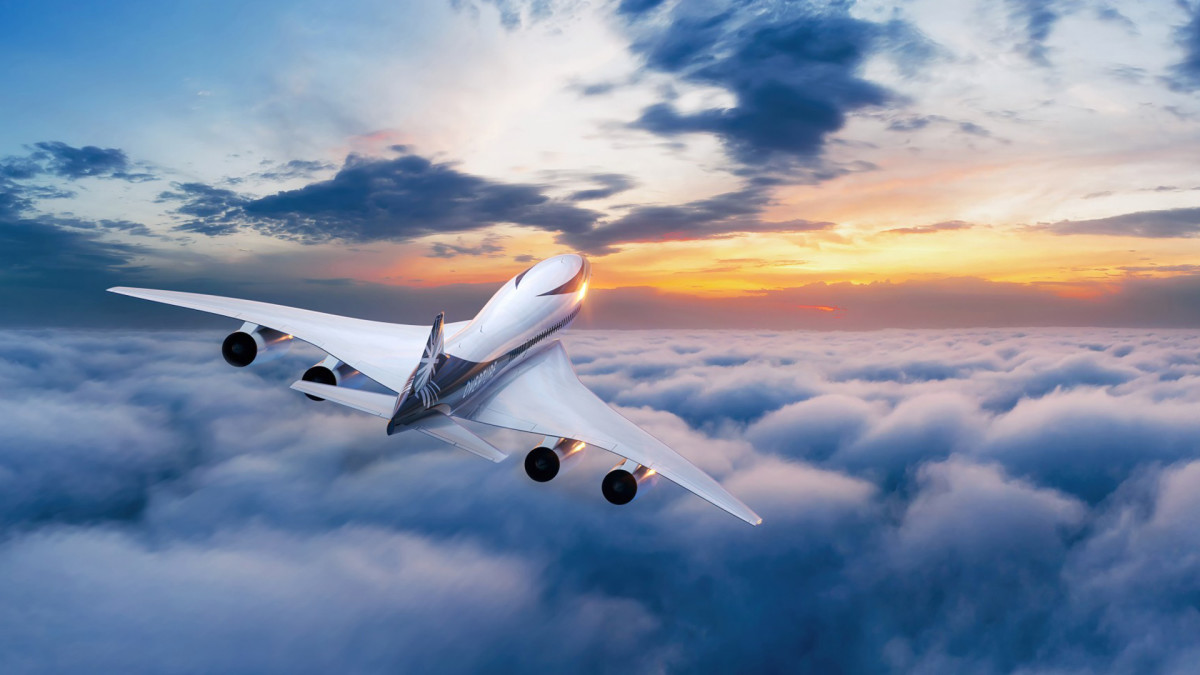
Hey, did you hear that? No?
Well, that's the idea.
NASA and Lockheed Martin (LMT) -) have been on a quest of sorts to lower the boom on supersonic flights.
Related: Here's why Apple might acquire this famous fitness company in 2024
A sonic boom, as we all know, is the sound associated with shock waves created when an object travels through the air faster than the speed of sound.
New Year, New Flight Horizon.@NASA and Skunk Works® will reveal the X-59 quiet supersonic flight demonstrator on January 12. Get ready for the first look at the future of supersonic flight. pic.twitter.com/ponIgN33dE
— Lockheed Martin (@LockheedMartin) January 1, 2024
They tend to sound like explosions or thunderclaps and sonic booms led many countries to ban the Concorde supersonic airliner a generation ago.
Only the U.S., Great Britain, and France allowed the Concorde to enter their airspace, and then only to cities in close proximity to the ocean, such as New York, London, Paris, and Washington, DC.
What to do about all that racket?
Rollout ceremony planned
Turn it down, that's what, and that's exactly what the X-59 Quiet SuperSonic Technology (Quesst) jet has been designed to do — break the sound barrier without creating that earsplitting sonic boom.
NASA said that X-59’s technology pumps down the volume of a sonic boom so it sounds like a gentle thump to people on the ground.
The X-59’s nose makes up almost a third of the aircraft length, which the space agency said is essential in shaping shock waves during supersonic flight, resulting in thumps instead of booms.
The X-59 has been under construction at Lockheed Martin's "Skunk Works" facility in Palmdale, Calif. since 2019.
Skunk Works, also known as Advanced Development Programs, has been the force behind a number of aircraft designs, highly classified research and development programs.
The facility began with the P-38 Lightning in 1939 and the P-80 Shooting Star in 1943 and its engineers went on to develop the U-2, SR-71 Blackbird, F-117 Nighthawk, F-22 Raptor, and F-35 Lightning II.
And now Skunk Works can add the X-59 to its resume.
NASA will hold a red, white, and blue public debut for the X-59, which is scheduled to be rolled out from the Skunk Works hangar on Jan. 12.
The rollout ceremony will be broadcast live on the NASA+ streaming service beginning at 4 p.m. EST. The event also will air live on the NASA app, YouTube, and on the agency’s website.
Open door to new global market
For the record, Lockheed Martin released a video showing an assembled X-59 rolling out of a hangar on August 4, but that was before its patriotic paint job.
"This breakthrough would open the door to an entirely new global market for aircraft manufacturers, enabling passengers to travel anywhere in the world in half the time it takes today," Lockheed Martin said on its website.
NASA said it is planning a test flight of the X-15 for this year, after scrubbing plans for a 2023 take-off, as the Quesst team worked “through several technical challenges.”
“Extra time is needed to fully integrate systems into the aircraft and ensure they work together as expected,” NASA said in October.
The agency said it will share reaction to the quieter sonic "thumps" with regulators who will then consider writing new sound-based rules to lift the ban on faster-than-sound flight over land.
A supersonic aircraft could conceivably take passengers New York to London in less than four hours—as opposed to the current 7-hour flight.
A faster-than-sound trip from San Francisco to Tokyo could take six hours instead of 11 hours and 20 minutes.
This convenience can mean big business and Vaughn College of Aeronautics and Technology said in a July 2022 blog post that “the race is on for the return of supersonic air travel. “
“With the reality that supersonic jets could once again be ‘on the horizon,’ aviation corporations and travel enthusiasts alike are gearing up for an exciting ride," the post said.
Get exclusive access to portfolio managers’ stock picks and proven investing strategies with Real Money Pro. Get started now.







